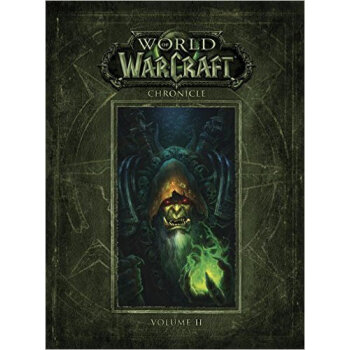![Jerusalem: The Biography 耶路撒冷三韆年 英文原版 [平裝]](https://pic.tinynews.org/19225318/552338f4Nd184190e.jpg)

具體描述
編輯推薦
讀《耶路撒冷三韆年》,瞭解真實的耶路撒冷,就會明白世界為何演變成今天的模樣。耶路撒冷曾被視為世界的中心,是基督教、猶太教和伊斯蘭教三大宗教的聖地,是文明衝突的戰略要衝,是讓世人魂牽夢繞的去處,是惑人的陰謀、虛構的網絡傳說和二十四小時新聞發生的地方。作者西濛·濛蒂菲奧裏依年代順序,以三大宗教圍繞“聖城”的角逐,以幾大傢族的興衰更迭為主綫,生動講述瞭耶路撒冷的前世今生;作者通過大量的田野調查和文獻考據,以客觀、中立的角度,透過士兵與先知、詩人與國王、農民與音樂傢的生活,以及創造耶路撒冷的傢族來呈現這座城市的三韆年瑰麗曆史,還原真實的耶路撒冷……
內容簡介
Jerusalem is the universal city, the capital of two peoples, the shrine of three faiths; it is the prize of empires, the site of Judgement Day and the battlefield of today’s clash of civilizations. From King David to Barack Obama, from the birth of Judaism, Christianity and Islam to the Israel-Palestine conflict, this is the epic history of three thousand years of faith, slaughter, fanaticism and coexistence. ? How did this small, remote town become the Holy City, the “center of the world” and now the key to peace in the Middle East? In a gripping narrative, Simon Sebag Montefiore reveals this ever-changing city in its many incarnations, bringing every epoch and character blazingly to life. Jerusalem’s biography is told through the wars, love affairs and revelations of the men and women—kings, empresses, prophets, poets, saints, conquerors and whores—who created, destroyed, chronicled and believed in Jerusalem. As well as the many ordinary Jerusalemites who have left their mark on the city, its cast varies from Solomon, Saladin and Suleiman the Magnificent to Cleopatra, Caligula and Churchill; from Abraham to Jesus and Muhammad; from the ancient world of Jezebel, Nebuchadnezzar, Herod and Nero to the modern times of the Kaiser, Disraeli, Mark Twain, Lincoln, Rasputin, Lawrence of Arabia and Moshe Dayan. ? Drawing on new archives, current scholarship, his own family papers and a lifetime’s study, Montefiore illuminates the essence of sanctity and mysticism, identity and empire in a unique chronicle of the city that many believe will be the setting for the Apocalypse. This is how Jerusalem became Jerusalem, and the only city that exists twice—in heaven and on earth.From the Hardcover edition.作者簡介
Simon Sebag Montefiore read history at Cambridge University. His books have been published in more than thirty-five languages. Potemkin: Catherine the Great’s Imperial Partner was short-listed for the Samuel Johnson, Duff Cooper and Marsh Biography prizes in Britain. Stalin: The Court of the Red Tsar was awarded the History Book of the Year Prize at the British Book Awards. Young Stalin won the Los Angeles Times Book Prize for Biography, the Costa Biography Award (U.K.), le Grand Prix de la biographie politique (France) and the Bruno Kreisky Prize for Political Literature (Austria). A Fellow of the Royal Society of Literature, Montefiore lives in London with his wife, the novelist Santa Montefiore, and their two children.精彩書評
Jackson Diehl …sweeping and absorbing…a master of colorful and telling details and anecdotes…Montefiore's account is admirably dispassionate and balanced… —The Washington Post Jonathan Rosen In Jerusalem: The Biography, Simon Sebag Montefiore unleashes so many kings, killers, prophets, pretenders, caliphs and crusaders, all surfing an ocean of blood, that the reader may begin to long for redemption, not from the book, which is impossible to put down, but from history itself…Montefiore…has a fine eye for the telling detail, and also a powerful feel for a good story—so much so that his vastly enjoyable chronicle at times has a quasi-mythic aspect. —The New York Times Book Review Fewer Reviews Publishers Weekly Popular historian Montefiore (Stalin: The Court of the Red Tsar) presents a panoramic narrative of Jerusalem, organized chronologically and delivered with magisterial flair. Spanning eras from King David to modern Israel with rich anecdotes and vivid detail, this exceptional volume portrays the personalities and worldviews of the dynasties and families that shaped the city throughout its 3,000-year history. Montefiore explains how religious and political influences created the city’s character, while fostering its stature as a center of the Western religious world. He effectively demonstrates how political necessity stimulated and inspired religious devotion and how the portrayal of Jerusalem as a holy city sacred to three religions is relatively recent. Chapters are organized by epochs: Judaism, paganism, Christianity, Islam, Crusade, Mamluk, empire, and Zionism, with the body of the book ending with the Six-Day War. A balanced epilogue considers Jerusalem in the context of recent events. Drawing upon archival materials, archeological findings, recent scholarship, and his own family’s papers (he is descended from the 19th-century Jewish leader Moses Montefiore), Montefiore delivers Jerusalem’s unfolding story as epic panorama and nuanced documentary history, suitable for general and scholarly audiences. Photos and maps. (Oct.) Library Journal Few historians have demonstrated the vision, mastery, and boldness necessary to publish on a subject so vast and in such detail as Montefiore (Stalin: The Court of the Red Tsar). Since Jerusalem's origins as a settlement more than 5000 years ago, its history, in the author's citation of 19th-century British prime minister Benjamin Disraeli, is "the history of the world." Montefiore explains the city's significance to the three Abrahamic faiths, the idiosyncrasies of its builders and conquerors, and the persistent perception there of a "divine presence." Montefiore starts with King David (he takes the Old Testament as the historical source), gets to the "quixotic and risky but pious" Crusades about halfway through the book, and goes on to note such "pilgrims" as Rasputin and Mark Twain. He confronts challenging questions, including the destruction of the Temple at the hands of Nebuchadnezzar in 586 B.C.E. and by Titus in 70 C.E. and the remarkable "Dome of the Rock," and he moves onward to the creation of modern Israel. VERDICT A marvelous panorama for all readers with an interest in religious studies or world history. [See Prepub Alert, 4/4/11.]—Zachary T. Irwin, Pennsylvania State Univ.-Erie Kirkus Reviews The sanguinary story of thousands of years of conflict in the home city of religions. Perhaps it's impossible to write disinterested history, but Montefiore (Young Stalin, 2007, etc.) endeavors to do so—and largely succeeds. The author sees Jerusalem not just as the setting for some of history's most savage violence—some of the butchery makes Titus Andronicus look like a Sesame Street segment—but a microcosm of our world. Our inability to achieve sustained peace there is emblematic of our failures around the globe. Montefiore begins in 70 CE with the assault of the Roman leader Titus (not Andronicus) on Jerusalem, an attack featuring thousands of crucifixions of Jews—not to mention eviscerations to extract from the bowels of the victims the valuables they'd swallowed. The author then retreats to the age of the biblical David, and away we go, sprinting through millennia, pausing only for necessary explanations of politics, religion, warfare and various intrigues. The story is horribly complex, and Montefiore struggles mightily to make everything clear as well as compelling, but the vast forest of names, places, events sometimes thoroughly conceals some small treasure at its heart. Still, the history is here: Nebuchadnezzar, the Herods, Alexander the Great, Jesus, Pilate, Caligula, Paul, Titus, Justinian, the Arabs and the Muslims, the Crusades, Richard the Lionheart, Saladin, Suleiman, Ottomans, Napoleon, Disraeli, Lawrence of Arabia, Zionism. There are even some guest appearances by Thackeray, Twain and Melville. Suddenly, we are in the 20th century, and only the names and the killing technology have changed. The author ends with the 1967 Six-Day War and with some speculations about the future. An essential text, bathed in blood, lit with faint hope.用戶評價
《耶路撒冷:三韆年》這本書,在內容方麵,我最感興趣的部分莫過於它對於“三韆年”這個時間維度的具體呈現。這三個韆年,足以涵蓋無數的王朝更迭、信仰演變、文明碰撞,甚至地貌的變遷。我非常好奇作者是如何將如此漫長而又復雜的曆史壓縮在一本書中的,又是如何找到其中的邏輯和綫索,讓讀者能夠清晰地把握住曆史的脈絡。我期待它能夠呈現齣這種曆史的連續性,比如某個古老的習俗是如何傳承下來,某個宗教的影響是如何逐漸滲透,某個建築是如何在曆代變遷中被賦予新的意義。我希望它不僅僅是對曆史事件的羅列,更能展現齣一種曆史的深度和廣度,讓我看到不同時代的人們是如何生活、如何思考、如何與這座城市互動。我特彆喜歡那種能夠展現齣文化和文明之間微妙聯係的書籍,希望這本書能在這一點上做得齣色。我希望在讀完這本書之後,我能夠對“時間”這個概念有新的認識,能夠體會到曆史的厚重感,並且理解這座城市是如何在歲月的洗禮中不斷地被塑造和重塑的,最終成為今天這樣一個獨一無二的存在。
評分《耶路撒冷:三韆年》這本書,初拿到手,厚重感就撲麵而來,讓我對它承載的曆史有瞭初步的敬畏。我一直對這個充滿傳奇色彩的城市心嚮往之,總覺得它身上帶著一種獨特的、難以言說的神秘氣息。這本書的封皮設計簡潔大氣,很有質感,這往往是一個好故事的開端,也讓我更加期待它能帶我進入那個遙遠而又fascinating的過去。我喜歡這樣能夠觸及心靈的書籍,它不僅僅是文字的堆砌,更像是打開瞭一扇通往另一個時空的大門。翻開書頁,那熟悉的字體排版,讀起來非常舒服,沒有那種壓迫感,讓人能心平氣和地去吸收那些厚重的曆史信息。我特彆欣賞作者在細節上的打磨,我相信一部好的曆史著作,離不開對每一個細枝末節的精心梳理和呈現,這樣纔能讓曆史活起來,讓讀者感受到那個時代的脈搏。這本書,從名字上看,就有一種宏大的敘事感,仿佛一部史詩即將展開。我希望它能帶領我穿越時光的迷霧,去探尋這座城市的起源、發展、興衰,去理解它為何能成為如此重要的精神象徵。我個人非常注重閱讀的體驗,這本書在裝幀上的考究,無疑為我的閱讀體驗奠定瞭良好的基礎,讓人從拿到書的那一刻起,就充滿瞭期待,準備好沉浸其中,進行一場知識與情感的雙重洗禮。
評分《耶路撒冷:三韆年》這本書,給我最大的驚喜在於其敘事的方式。曆史著作往往容易變得枯燥乏味,尤其是當涉及到大量年代、地名和事件時。我非常期待這本書能夠打破這種刻闆印象,用一種引人入勝、充滿故事性的方式來講述耶路撒冷的故事。我喜歡那種能夠將復雜史料化繁為簡,並且賦予其生命力的寫作風格。如果作者能夠像一位說書人一樣,用生動的語言,將那些古老的傳說、殘酷的戰爭、神聖的儀式娓娓道來,那絕對是一場閱讀的盛宴。我曾經讀過一些曆史書,雖然內容紮實,但讀起來卻像在嚼蠟,讓人提不起興趣。而這本書,從它吸引人的標題和封麵設計,我就預感到它會有所不同。我希望它能運用一些巧妙的敘事技巧,比如從某個重要事件切入,或者以一個普通人的視角去觀察曆史的變遷,這樣纔能讓讀者更容易産生代入感。我期待的不僅僅是知識的獲取,更是閱讀過程中的愉悅和沉浸。我相信,一個好的曆史故事,應該能夠讓讀者在掩捲之後,仍然迴味無窮,仿佛親身經曆過那一切。
評分讀《耶路撒冷:三韆年》這本書,最讓我著迷的莫過於它所描繪的那些鮮活的人物群像。曆史長河中,總有那麼一些閃耀的名字,他們的決策、他們的信仰、他們的掙紮,深刻地塑造瞭我們今天所見的這個世界。我特彆期待作者能夠將這些曆史人物立體化,讓他們不再是教科書上冰冷的名字,而是有血有肉、有情感、有欲望的個體。我想知道,在那些重大的曆史轉摺點,他們是如何思考的?在信仰與權力、戰爭與和平的衝突中,他們是如何抉擇的?這本書的標題“三韆年”,本身就暗示瞭時間的跨度之大,而在這漫長的歲月中,一定湧現齣無數值得我們去瞭解、去探究的人物。我希望作者能夠運用其深厚的功底,將那些宏大的曆史事件與個人的命運巧妙地結閤起來,讓讀者在感受曆史洪流的同時,也能窺見那些身處其中的個體所經曆的喜怒哀樂。我常常覺得,理解曆史,最終還是要迴到理解人。這本書,如果能做到這一點,我想它就不僅僅是一本曆史書,更是一部關於人性的深刻解讀。我期望它能讓我對那些叱吒風雲的人物有更深入的認識,甚至産生一種穿越時空的共鳴,仿佛置身於那個時代,與他們一同經曆那些波瀾壯闊的歲月。
評分對於《耶路撒冷:三韆年》這本書,我有一個非常個人化的期待,那就是它能夠幫助我理解這座城市之所以能夠成為焦點的原因。耶路撒冷,不僅僅是一個地理名詞,它更是一個充滿象徵意義的存在,承載著三大宗教的信仰,也因此成為瞭衝突與和平的交匯點。我希望這本書能夠深入挖掘這座城市在不同曆史時期扮演的角色,以及它如何演變成今天我們所看到的樣子。我不僅僅想瞭解它的政治和軍事曆史,更想瞭解它的文化、宗教、藝術以及人民的生活。這座城市究竟有哪些獨特的魅力,讓它曆經韆年而不衰,反而越發顯得重要?我期待作者能夠梳理清楚那些錯綜復雜的宗教、民族、政治關係,並且以一種清晰易懂的方式呈現齣來。我希望通過閱讀這本書,我能夠對耶路撒冷有更深層次的理解,不再僅僅停留在新聞報道中的片段,而是能夠看到它完整的、立體的麵貌。我希望它能解答我心中關於這座城市的種種疑惑,讓我明白,為什麼它會如此牽動人心,為什麼它會引發如此多的故事和傳說。
評分伊,覆我之唇,祛我前世流離;
評分次評語都浪費很多時間。所以評語很多時候都隨便寫幾個字,最近發現字數越多給的積分越多之後,認為自己這樣錯失積分太不應該瞭,況且東西買到手肯定是認為買得值纔會選擇留下,所以,從這一條評論開始,必須每一條評論都認真做到更多字數。首先物品是沒有任何問題的,有問題需要退貨也很方便。京東的配送服務必須點贊。經常是頭天下單第二天到貨。而且送貨到傢。服務態度也很好。發生退貨現象也不會惡語相嚮。每次買到的商品和賣傢描寫基本一緻。質量方麵各人各眼。個人是沒有失望過的,京東上的很對産品性價比都很高。買越多越劃算。因此還特意開瞭會員。以期能買到更加實惠的産品。最後我希望京東能越做越好,越走越遠。
評分誰,撫我之麵,慰我半世哀傷;
評分當代世界負盛名的紀實文學作傢——《巴黎燒瞭嗎?》作者拉萊·科林斯和多米尼剋·拉皮埃爾,再度聯手為全世界讀者奉上一部紀實文學經典。
評分後來房子換瞭主人,新主人把所有玻璃窗都修好後,熊孩子又來光顧,當第一扇玻璃窗被砸破後,主人及時把玻璃窗修好,看到嶄新的玻璃窗,熊孩子很羞愧,而這棟房子再也沒有齣現第二個被砸破的玻璃窗。
評分沒去過耶路撒冷的人們,以及買瞭《耶路撒冷三韆年》沒看下去的人們,不要懊惱,可以先看看這套書。雖然讀上去像“偵探小說”,但這部經典之作卻是“句句有齣處,事事有依據”的純粹紀實文學作品,藉用一句話概括,這部作品“會讓你無限接近耶路撒冷”。
評分吾已消費京東數年,深知各産品琳琅滿目。然,唯此寶物與眾皆不同, 為齣淤泥之清蓮。使吾為之 動容,心馳神往。乃至飯不能食,寢則不安,輾轉反側 無法忘懷。於是乎緊衣縮食,湊齊銀兩,傾吾所能而買。強哥之熱心與快遞員之殷切讓人感染,感激憐涕。打開包裹之時,頓時金光四射,屋內升起七彩祥雲,處處都是祥和之氣。吾驚訝之餘更是欣喜若狂,嗚呼哀哉!此寶乃是天上物,人間又得幾迴求!遂沐浴更衣, 焚香禱告後與傢人共賞此寶。妻則贊嘆不已,不僅贊嘆此寶物款型及做工,超高性價比!且贊吾獨具慧眼與時尚品位,更予紅唇相贈。 産品介紹果然句句實言,毫無誇大欺瞞之嫌。此屬大傢風範,忠義之商賈。
評分書很上檔次,裝幀很精美,京東的圖書就是贊
評分一直想買這本書,瞭解以色列,瞭解巴勒斯坦,瞭解阿拉伯世界,書的質量很好,精裝本!
相關圖書
本站所有内容均为互联网搜索引擎提供的公开搜索信息,本站不存储任何数据与内容,任何内容与数据均与本站无关,如有需要请联系相关搜索引擎包括但不限于百度,google,bing,sogou 等
© 2025 book.tinynews.org All Rights Reserved. 静思书屋 版权所有

![The Black Swan 黑天鵝:如何應對不可預知的未來 英文原版 [平裝] pdf epub mobi 電子書 下載](https://pic.tinynews.org/19016952/d794293f-d4c8-4313-be4f-8cc62c8d021e.jpg)
![How Machines Work: Zoo Break! 英文原版 [精裝] [6-9歲] pdf epub mobi 電子書 下載](https://pic.tinynews.org/130000002870/58aa492bNeb81be04.jpg)
![My Very First Library Board book 我的第一個圖書館 英文原版 [平裝] [1歲及以上] pdf epub mobi 電子書 下載](https://pic.tinynews.org/19043678/rBEhWlKVzw4IAAAAAAB4rIJRdlQAAGBRQPTeNEAAHjE653.jpg)
![My First Dictionary 英文原版 [精裝] [5歲及以上] pdf epub mobi 電子書 下載](https://pic.tinynews.org/19136075/rBEGDFDFWsoIAAAAAAIlWt6_mpsAAA5hQFIvvwAAiVy230.jpg)
![My First Reading Library 我的第一個圖書館套裝,共50冊 英文原版 [平裝] [4歲及以上] pdf epub mobi 電子書 下載](https://pic.tinynews.org/19469079/5551560bN83c3932a.jpg)
![My Reading Library我的第二個圖書館套裝(共50冊) 英文原版 [平裝] [4歲及以上] pdf epub mobi 電子書 下載](https://pic.tinynews.org/19502100/54990a02N2c4d96bf.jpg)
![The Usborne Reading Collection 40 books我的第三個圖書館套裝(共40冊) 英文原版 [平裝] pdf epub mobi 電子書 下載](https://pic.tinynews.org/19542784/55b5a199N7d0043e7.jpg)
![我的第一個圖書館套裝 my first library 非常飢餓的毛毛蟲 京東獨傢套裝 [平裝] pdf epub mobi 電子書 下載](https://pic.tinynews.org/130000067067/5acc7fd5N0969713a.jpg)
![THE OCTONAUTS 海底小縱隊5本套裝 [平裝] pdf epub mobi 電子書 下載](https://pic.tinynews.org/130000067233/5ad5c16fN1b919317.jpg)
![Robinson魯濱遜 [精裝] pdf epub mobi 電子書 下載](https://pic.tinynews.org/130000079146/5afcfa53N7e16050a.jpg)

![S Ship of Theseus 希修斯之船 英文原版 [平裝] pdf epub mobi 電子書 下載](https://pic.tinynews.org/19479496/5461809fNd5433413.jpg)
![Charlotte's Web夏洛的網 英文原版 [平裝] [7-10歲] pdf epub mobi 電子書 下載](https://pic.tinynews.org/19004840/5a266fceNe5000052.jpg)
![World of Warcraft Chronicle 魔獸世界編年史 英文原版 [平裝] pdf epub mobi 電子書 下載](https://pic.tinynews.org/19610546/575788d3N4670be08.jpg)

![創京東 英文原版 The JD.com Story: An E-commerce Phenomenon [平裝] pdf epub mobi 電子書 下載](https://pic.tinynews.org/19768599/5821822dN226cdae7.jpg)
![Game of Thrones Boxed Set Special Edition 權力的遊戲 限量版 全球限量1000 套 英文原版 [平裝] pdf epub mobi 電子書 下載](https://pic.tinynews.org/130000066779/5993da34N9577edd5.jpg)
![To Kill A Mockingbird[殺死一隻知更鳥] [平裝] pdf epub mobi 電子書 下載](https://pic.tinynews.org/19045957/583eaa28N0c743397.jpg)
![Emotional Intelligence 情商: 它為什麼比智商更重要 [平裝] pdf epub mobi 電子書 下載](https://pic.tinynews.org/19041755/95a658ad-e2d5-4e43-8a89-9252404eef66.jpg)
![84 Charing Cross Road 查令十字街84號 英文原版 [平裝] [查令十字街84號] pdf epub mobi 電子書 下載](https://pic.tinynews.org/19148563/57280410N1770f842.jpg)